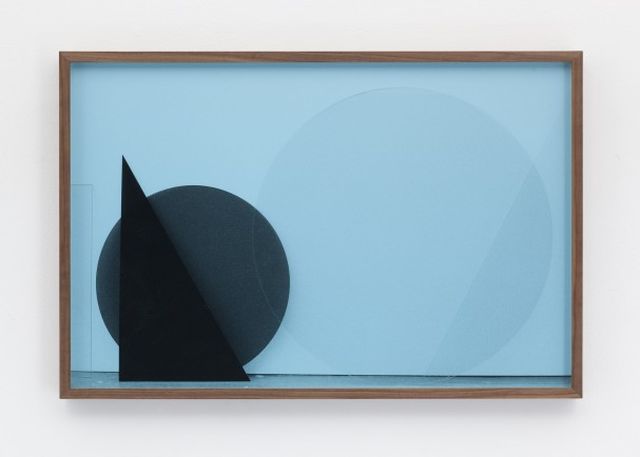
Argentinian artist Amalia Pica’s second solo show at Stigter Van Doesburg is a continuation of a project begun at the Museo Tamayo in Mexico City in the summer of 2013. At Stigter van Doesburg she is presenting a group of sculptures and a film in which she pursues her formal and political exploration of mathematical set theory. Pica’s works suggest systems of exchange, transmission and reception of information, at the same time as they offer a fresh reading of the avant-gardes and abstraction.
At the 54th Venice Biennale in 2011 Pica presented Venn Diagrams (under the spotlight), a projection of two coloured circles inspired by the set theory John Venn developed to describe the logical-mathematical relationships of inclusion and exclusion. The Venn diagram reference is especially significant for this artist: under the 1976–1983 dictatorship in her native Argentina the diagrams were banned from the school curriculum on the grounds of their subversive potential for instigating group dynamics and expressions of collectivity. Thus her work foregrounds the inherent political aspect of information exchange.
Since 2013, first at Museo Tamayo in Mexico with the exhibition A∩B∩C, then at Herald St Gallery London, Kunsthalle Lisbon, Van Abbe Museum Eindhoven, La Criée Rennes, Guggenheim New York, Serralves Museum Porto and now at Stigter van Doesburg, Pica has been replaying the issues raised by Venn’s diagrams. For A∩B∩C she arranged coloured geometrical plexiglas shapes along the gallery walls: the exhibition was regularly activated by performers who brought the shapes together at the centre of the space, held them up in a way that gave rise to certain combinations, put them back in a different place, and then repeated the exercise forming a new composition.
Photographs and a film resulted from these performances and the film is being shown together with a group of sculptures specially made for the exhibition. A joint venture with Mexican filmmaker Rafael Ortega, the film shows the shapes at rest, their slow activation by the performers and then the way they are combined, making up a new ‘sentence’ each time. As an attempt to start at the crucial point (the intersection) the two screens projection starts with such close angles of the shapes that the narrative appears extremely abstract and it slowly unveils the performance as the zoom travels outwards. The two screens seem at several points to form one singular image, thus intersecting with each other and giving the video installation its title: A∩B∩C∩A∩B∩C. The soundtrack is an abstract language developed by assigning consonants to shapes and vowels to colours so that meaningless phrases are formed following each composition. An exercise in syntax as possible meaning.
The sculptures – metal structures with the same coloured Perspex shapes suspended from them – are memorials of the different compositions formed by the performers in the film . They function as ‘fixatives’ of the shapes meetings which are in turn testimony of the meeting of the performers in the first place. Moreover the series synthesises many aspects of the history of abstract sculpture, including Minimalism, Kinetic Art and Constructivism as well as concrete poetry.
Amalia Pica’s exhibition is a wordless narrative, an invitation to reflect on the construction, composition and effectiveness of all narrative and all language: in short, a visual semiotics. And it is also a playful take on the way we reconstruct events and the fictional recreation that takes place when making history, when linking one thing after another into a bigger narrative.